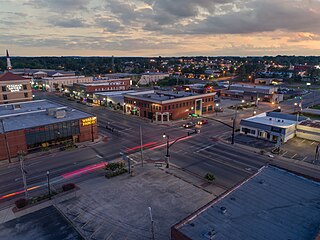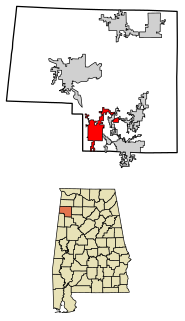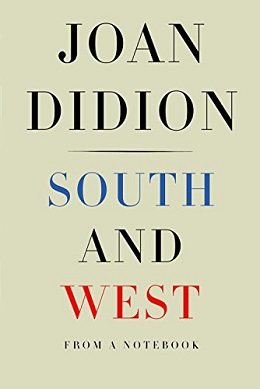
Marion County is a county of the U.S. state of Alabama. As of the 2010 census the population was 30,776. The county seat is Hamilton. The county was created by an act of the Alabama Territorial General Assembly on February 13, 1818. The county seat was originally established in Pikeville in 1820, and moved to Hamilton in 1881. The county was named for General Francis Marion of South Carolina.

Clayton is a town in and the county seat of Barbour County, Alabama, United States. The population was 3,008 at the 2010 census, up from 1,475 in 2000.

Cullman is a city in and the county seat of Cullman County, Alabama, United States. It is located along Interstate 65, about 50 miles (80 km) north of Birmingham and about 55 miles (89 km) south of Huntsville. As of the 2010 census it had a population of 14,775, with an estimated population of 15,385 in 2017.

Mountain Brook is a town in southeastern Jefferson County, Alabama, United States, and a suburb of Birmingham. Its estimated 2015 population was 20,691. It is one of the state's most affluent places.

George Corley Wallace Jr. was the 45th Governor of Alabama, a position he occupied for four terms, during which he promoted "low-grade industrial development, low taxes, and trade schools". He sought the United States presidency as a Democrat three times, and once as an American Independent Party candidate, unsuccessfully each time. He is best remembered for his staunch segregationist and populist views. Wallace was known as "the most dangerous racist in America" and notoriously opposed desegregation and supported the policies of "Jim Crow" during the Civil Rights Movement, declaring in his 1963 inaugural address that he stood for "segregation now, segregation tomorrow, segregation forever".

Lurleen Burns Wallace was the 46th Governor of Alabama for fifteen months from January 1967 until her death in May 1968. She was the first wife of Alabama Governor George Wallace, whom she succeeded as governor because the Alabama constitution forbade consecutive terms. She was Alabama's first female Governor and was the only female governor to hold the position until Kay Ivey became the second woman to succeed to the office in 2017. She is also the only female governor in U.S. history to have died in office. In 1973, she was posthumously inducted into the Alabama Women's Hall of Fame.

James Douglas Martin was an American businessman and Republican politician from the U.S. state of Alabama, who served a single term in the United States House of Representatives from 1965 to 1967. His 1962 campaign for the United States Senate against the Democrat J. Lister Hill was the first serious showing by a member of his party in Alabama since Reconstruction.

Vivian Thomas was one of the first two black students to enroll at the University of Alabama in 1963, and in 1965 became the university's first black graduate. She was made famous when George Wallace, the Governor of Alabama, attempted to block her and James Hood from enrolling at the all-white university.

U.S. Route 278 (US 278), mostly internally designated by the Alabama Department of Transportation as State Route 74 (SR 74), is a major east–west U.S. highway across the northern part of the U.S. state of Alabama. West of Hamilton, SR 74 continues west to end at US 78, while US 278 turns south along US 43/SR 17/SR 171 to Guin, where it turns west along SR 118 to the Mississippi state line.

Memorial Parkway, also known as The Parkway, is a major thoroughfare in Huntsville, Alabama that carries over 100,000 vehicles on average a day. It, in whole or in part, follows U.S. Route 231, U.S. Route 431, U.S. Route 72, and State Route 53 through the Huntsville city limits. It is a limited access road through most of Huntsville city proper, providing exits to the frontage road which allows access to road intersections, as well as businesses and residences along the route. Both the limited access and frontage roads are referred to as Memorial Parkway. Originally constructed in the 1950s and officially opened on December 1, 1955, the highway is the major commercial thoroughfare through Huntsville, a status it has held since the mid-1960s.

The George Wallace Tunnel is a pair of road tunnels that carry Interstate 10 through Mobile, Alabama from the city's downtown, going beneath the Mobile River, and emerging on Blakeley Island where they join the Jubilee Parkway over Mobile Bay.
The Alabama Democratic Party is the affiliate of the Democratic Party in the state of Alabama. It is chaired by Nancy Worley.
Former Governor of Alabama George Wallace ran in the 1968 United States presidential election as the candidate for the American Independent Party. Wallace's pro-segregation policies during his term as Governor of Alabama were rejected by the mainstream of the Democratic Party. The impact of the Wallace campaign was substantial, winning the electoral votes of several states in the Deep South. Although Wallace did not expect to win the election, his strategy was to prevent either major party candidate from winning a majority in the Electoral College. This would throw the election into the House of Representatives, where Wallace would have bargaining power sufficient to determine, or at least strongly influence, the selection of a winner.

The Alabama gubernatorial election of 1970 was marked by a competitive Democratic primary battle between incumbent moderate Governor Albert Brewer and segregationist former Governor and 1968 independent presidential candidate George Wallace. The Alabama Constitution was amended in 1968, allowing a governor to serve two consecutive terms.

The 1964 United States presidential election in Alabama was held on November 3, 1964. Alabama voters chose ten representatives, or electors to the Electoral College, who voted for President and Vice-President.

The Stand in the Schoolhouse Door took place at Foster Auditorium at the University of Alabama on June 11, 1963. George Wallace, the Democratic Governor of Alabama, in a symbolic attempt to keep his inaugural promise of "segregation now, segregation tomorrow, segregation forever" and stop the desegregation of schools, stood at the door of the auditorium to try to block the entry of two African American students, Vivian Malone and James Hood.

Elections in Alabama are authorized under the Alabama State Constitution, which establishes elections for the state level officers, cabinet, and legislature, and the election of county-level officers, including members of school boards.



















